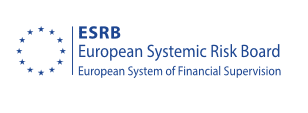Industry commentators have hit back at the warnings made by the European Systematic Risk Board (ESRB) that ETFs have the potential to cause systemic risk in the global financial system.
Last month, the ESRB highlighted four areas where ETFs had the possibility of having a negative impact on financial stability.
These included ETF investors causing co-movement of underlying securities, the ecosystem relying too heavily on authorised participants (APs) for liquidity and the potential for large correlations among investors.
The ERSB concluded by advising future empirical research to focus on two areas; ETF order flows in periods of stress and the extent to which financial institutions have significant and common exposures to ETFs or rely on them for their liquidity management.
However, commentators have argued a number of reasons why investors should not be as concerned about the ETF structure as the ESRB is suggesting.
One area of the ETF industry which has come under fire from regulators and industry observers is the role of APs.
Many argue, such as the ESRB and the European Central Bank, that APs engage in the creation-redemption process in “pursuit of profits and have no commitment to ETF sponsors or investors”.
However, in a recent response to the ECB, the European Fund and Asset Management Association (EFAMA) noted the average daily trading volumes in ETFs are far larger in the secondary market, away from any primary creation-redemption performed by APs.
Jim Goldie, head of capital markets at Invesco, said this has occurred during periods of stress, where the market saw more ETF trading in the secondary market, compared to the primary market.
“This illustrates that the secondary market acts as a shock absorber during volatile periods, as relatively more trading occurs in the ETF itself, rather than the underlying securities,” he added.
Although the ESRB warned there is the potential for APs to withdraw from the market, Hector McNeil, co-founder and co-CEO of HANetf, said they have the chance to make profits during these periods through arbitrage.
When the price of an ETF decouples from the underlying securities, it gives market makers the opportunity to arbitrage.
“One of the cornerstones of ETFs is arbitrage", McNeil responded. “[When arbitrage occurs,] the ETF price will be brought very quickly in line and is a profit potential [for APs].”
On the issue of large trades being liquidated at the same time causing co-movement of underlying securities, the HANetf co-CEO explained how every ETF usually has multiple APs or market makers that “have access to the best trading systems, trades and broad correlated risk pools”.
Furthermore, he added all ETF creations and redemptions are aggregated which acts as a buffer during periods of stress whereas with most other instruments all creations and redemptions are gross which can cause friction.
“The main issue is that the overall hypothesis of this commentary argues that the ability to trade and create and redeem ETFs is somehow negative as it allows investors to get hold of their money versus other investment vehicles that gate investors.
“ETFs are not a Harry Potter product,” McNeil continued. “They do not invent liquidity so if there are underlying liquidity issues then this will be reflected in the ETF.”



